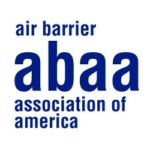
- This event has passed.
Multizonal Infiltration Modeling of an Existing Building Guided by Empirical Tracer Gas Decay Test Data
July 15, 2021 @ 1:00 PM - 2:00 PM EDT
Live webinar sponsored by the Air Barrier Association of America
Air infiltration driven by wind, stack, and buoyancy effects and HVAC system operation can have a significant impact on the heating and cooling load of a building throughout its operational life. Being able to accurately predict infiltration rates can help designers account for this impact and reduce the overall energy consumption of a building significantly over its lifetime. The existing airflow network models in the widely used building energy modeling (BEM) software EnergyPlus have significant limitations, so a more comprehensive physics-based multi-zonal contaminant transport and airflow network model was generated using CONTAM software of the flexible research platform (FRP) building located in the Oak Ridge National Laboratory (ORNL) main campus. The CONTAM model of the FRP building was then calibrated using empirical tracer gas decay test data spanning over multiple test periods and the model performance was systematically evaluated. Finally, both the whole-building and zone-specific infiltration rates generated using CONTAM were then used in EnergyPlus. Such a rigorously validated BEM data generated in this manner can facilitate the development and benchmarking of more accurate BEM software. This webinar will discuss the total process of generating a CONTAM model, calibrating the model with empirical data, and using the CONTAM model outputs with EnergyPlus, along with considerations and lessons learned during the process of this scientific study conducted at ORNL.
Learning Objectives:
- Review the basic process of tracer gas decay test, discussing its advantages and limitations.
- Review the basic process of multizonal airflow network modeling process, discussing its advantage and limitations.
- Discuss the multizonal airflow network model calibration process using tracer gas decay test and other pertinent data in a real building.
- Describe the process of co-simulating the calibrated multizonal airflow network model with EnergyPlus.
 Prateek Shrestha, PhD
Prateek Shrestha, PhD
Dr. Prateek Shrestha is a Postdoctoral Research Associate in the Integrated Building Performance Group at ORNL. He is working as the principal investigator in a research study being conducted by ORNL for assessing asbestos exposure risks when homes containing vermiculite insulation material are energy-retrofitted (weatherized) through the federal Weatherization Assistance Program. He is also involved in a number of other projects related to multizonal airflow simulations of the airborne SARS-CoV-2 viral aerosols within different zones in office buildings, and development of simplified multizone airflow model of an existing building using CONTAM. His expertise includes home weatherization, indoor air quality, indoor multizonal airflow modeling, meteorological and air monitoring instrumentation, building energy systems, building ventilation assessment with blower door testing, HVAC and thermo-fluidic systems design, and asbestos sampling and monitoring. He received his doctorate degree in mechanical engineering from the University of Colorado at Boulder and has various training, education, and past experiences in computational fluid dynamics, renewable energy systems, computer aided design, and manufacturing R&D. Prateek is originally from Kathmandu, Nepal and enjoys hiking, biking, cooking, painting, playing musical instruments, amateur DIY robotics and IoT projects, 3D printing and drone flying as his hobbies.
